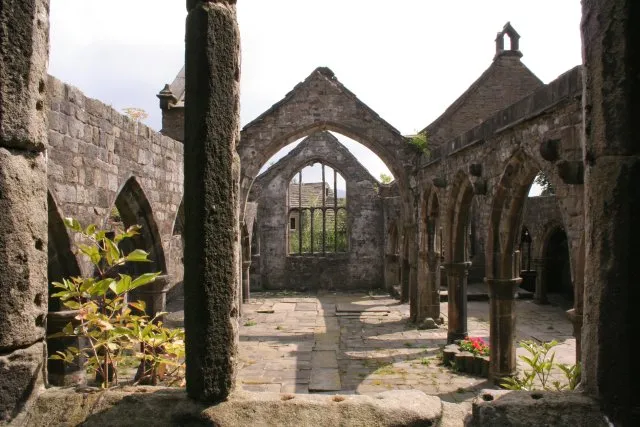Isolated Heptonstall, sitting high on a hill above the Calder Valley, has changed little in the last two centuries.
It’s easy to lose a couple of hours exploring the old lanes and snickelways where sturdy gritstone cottages – once the homes of handloom weavers – open out on to cobbled streets. You can almost hear the strains of a brass band and half expect a young lad to appear, pushing his bike over those stone setts, the front basket full of Hovis loaves.
A winter visit is especially rewarding, when wisps of smoke curl from chimneys, suggesting huge fires in huge fireplaces. Heptonstall’s exposed position 260m up on a hillside means that winter winds come whistling through those alleys and ginnels.

King of coins
This remote location made the village, and places like it, an ideal spot for illicit activity. Nearby Cragg Vale was at the heart of an 18th-century counterfeiting operation. Known as the Cragg Vale Coiners, the gang would clip genuine coins and melt the trimmings down to make new counterfeit coins. The mob was led by ‘King’ David Hartley, who was hanged at York’s Tyburn gallows in 1770 after his arrest. He is now buried in the churchyard. Sylvia Plath, the celebrated American poet and novelist, is also buried in this lonely West Yorkshire graveyard. She was married to Poet Laureate Ted Hughes, who was born in nearby Mytholmroyd and lived in Hebden Bridge.

Loom boom
The churchyard is the focal point of the village and holds both the skeletal remains of the 13th-century St Thomas a’ Becket church along with its Victorian replacement St Thomas the Apostle.
Take time to seek out some of the village’s other fascinating buildings, especially the former grammar school of 1772 and the octagonal Wesleyan chapel, which dates to 1764. The 18th century was a boom time for Heptonstall, its wealth powered by those industrious handloom weavers. Older still is the 16th-century Cloth Hall, and be sure to visit the White Lion, a gem of a pub serving local real ales and hearty food. There is no music, no gaming machines, no television and no Wi-Fi; a traditional inn, complementing the unique atmosphere of this lofty West Yorkshire village.
Main image ©Getty
